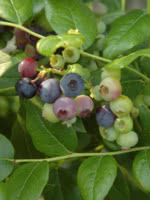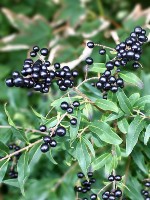Mon-Fri 9am - 5pm Mountain time
Chippewa Blueberry vs Wild Privet
Vaccinium x Chippewa
Ligustrum vulgare
NOT AVAILABLE THIS SEASON - MIGHT RETURN
Chippewa Blueberry is the perfect shrub for attracting birds and butterflies. Incredibly cold-hardy, the Chippewa Blueberry is an upright shrub making it easy for harvesting. Known for producing high yields of large blue-colored berries, this blueberry is a favourite for fresh eating, baking, and preserves. As with all blueberries, the Chippewa needs soil with a low pH and high acidity.
Wild Privet is a fast growing ornamental shrub that is well suited for forming hedges and privacy screens. It will retain its leaves in warmer climates but drops them in colder areas. They have small white flowers, though the smell is often considered unpleasant. While the berries are inedible, they are a good food source for many bird species.
It is recommended to prune Wild Privet immediately after flowering, as it can readily self seed. It is deer and rabbit tolerant. It can grow in dry areas, on slopes, and withstand the wind making it well suited for many growing conditions.
Chippewa Blueberry Quick Facts
Wild Privet Quick Facts
Toxicity: If ingested, all parts of this plant will cause severe discomfort. Toxic to dogs, cats, and horses

